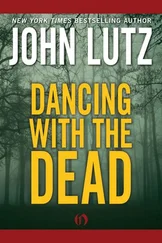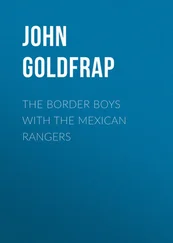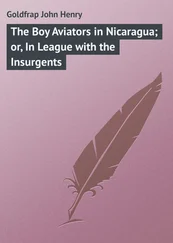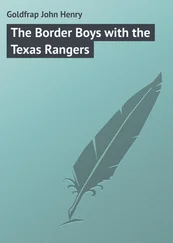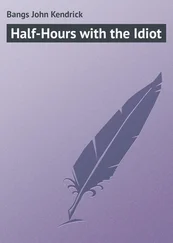John Wohlstetter - Sleepwalking with the Bomb
Здесь есть возможность читать онлайн «John Wohlstetter - Sleepwalking with the Bomb» весь текст электронной книги совершенно бесплатно (целиком полную версию без сокращений). В некоторых случаях можно слушать аудио, скачать через торрент в формате fb2 и присутствует краткое содержание. Город: Seattle, Год выпуска: 2012, ISBN: 2012, Издательство: Discovery Institute Press, Жанр: История, military, Политика, Публицистика, на английском языке. Описание произведения, (предисловие) а так же отзывы посетителей доступны на портале библиотеки ЛибКат.
- Название:Sleepwalking with the Bomb
- Автор:
- Издательство:Discovery Institute Press
- Жанр:
- Год:2012
- Город:Seattle
- ISBN:978-1-93659-906-6
- Рейтинг книги:3 / 5. Голосов: 1
-
Избранное:Добавить в избранное
- Отзывы:
-
Ваша оценка:
- 60
- 1
- 2
- 3
- 4
- 5
Sleepwalking with the Bomb: краткое содержание, описание и аннотация
Предлагаем к чтению аннотацию, описание, краткое содержание или предисловие (зависит от того, что написал сам автор книги «Sleepwalking with the Bomb»). Если вы не нашли необходимую информацию о книге — напишите в комментариях, мы постараемся отыскать её.
RICHARD PERLE, Resident Fellow, American Enterprise Institute and Assistant Secretary of Defense, 1981–1987 Sleepwalking with the Bomb
Sleepwalking with the Bomb — читать онлайн бесплатно полную книгу (весь текст) целиком
Ниже представлен текст книги, разбитый по страницам. Система сохранения места последней прочитанной страницы, позволяет с удобством читать онлайн бесплатно книгу «Sleepwalking with the Bomb», без необходимости каждый раз заново искать на чём Вы остановились. Поставьте закладку, и сможете в любой момент перейти на страницу, на которой закончили чтение.
Интервал:
Закладка:
Mao’s China appallingly underperformed economically and wreaked havoc socially and politically. But Deng Xiaoping succeeded him after his death in 1976, and in 1979 opened China’s trade to the world. Thus ended 545 years of first isolation and then reluctant limited participation in global commerce.
China’s economic power can be overstated—it is well shy of the power of the U.S. economy, despite the latter’s recent severe trials. Yet its sheer size makes it a force to be contended with. China is America’s second-largest trading partner, holding a one-sixth share of American international trade. It holds trillions in U.S. securities and dollar-denominated reserves. It is not for nothing that in 2011 Chinese president Hu Jintao questioned the dollar’s status as global reserve currency.
China is in the midst of a huge push to upgrade its military. It is building modern nuclear submarines and even an aircraft carrier—a warship only the U.S., Russia, Great Britain, and France have ever constructed. Its anti-ship missiles include models that can carry nuclear warheads a thousand miles. American air power based on carriers (or on Taiwan, often called by strategists America’s largest aircraft carrier) is a major part of America’s ability to project power across the Pacific. Neutralize these assets, and China’s ability to dominate the western Pacific becomes a strategic reality. (Neither South Korea nor Japan would be likely to allow its territory or equipment to be used in a U.S.-China conflict, lest China target it directly.)
Most impressive of all is China’s 2010 rollout of a stealth combat aircraft prototype, the J-20. Its configuration and size suggest a medium-range fighter-bomber that can target Taiwan or American naval ships (rather than an interceptor, which would shoot down bombers, or a pure air superiority fighter, designed to shoot down other fighters). The J-20 will be markedly inferior to the American F-22, the world’s only operational fifth-generation combat aircraft. But that is cold comfort to allied strategic planners, since America ended its F-22 production run at one-quarter the number originally planned. The Pentagon’s assessment was that China would not have a stealth fighter before the 2020s. The 2011 test flight of the J-20 suggests China is on a faster track. This comes as America’s F-35, the future stealth fighter of choice for the U.S., continues to encounter technical problems that have pushed back its likely operational status into the mid-teens. Were China to deploy a sufficient number of J-20s, it could prevail over superior American quality in a major regional conflict.
Underpinning China’s growing military machine is its nuclear arsenal. After American nuclear threats during the Korean War, the August 1954 first crisis over offshore islands Quemoy and Matsu, and then the American mutual defense treaty with Taiwan in December of 1954, Mao gave the go-ahead on January 15, 1955, to start China’s nuclear program. Although secrets stolen from the Manhattan Project may have played a role in China’s program, China early on developed a formidable in-country team of nuclear scientists. Russia also transferred technology and know-how, from 1954 through 1958 (the year of the second crisis over Quemoy and Matsu, when the United States threatened to use tactical nuclear weapons in a fight with China over its shelling of the islands). Henry Kissinger writes that a key motive behind Khrushchev’s decision to transfer nuclear technology to China was so that Moscow would not feel obligated to back China in event of another major confrontation with the United States.
But in 1959 Khrushchev decided to halt Russian assistance, unnerved, Kissinger writes, by Mao Zedong’s nuclear brinkmanship over Quemoy and Matsu. Weapons designers Thomas C. Reed and Danny Stillman write in The Nuclear Express that the Russians, upon deciding to slow China’s march to nuclear weapon status, even supplied the Chinese with deliberately false data in order to sabotage their progress. But many of China’s top scientists studied in other countries, including the United States, and then brought their knowledge back to China.
In 1961, Mao declared he would build nuclear weapons “even if the Chinese had to pawn their trousers.” He was expressing a sentiment the West would hear often, from various leaders, in the years that followed. In starting Pakistan’s quest for the bomb, Prime Minster Zulfikar Ali Bhutto famously said that his people would “eat grass,” if need be, to go nuclear. Starving millions did not deflect North Korea from its program. Put simply, no police state has qualms about pursuing weapons amidst its population’s destitution, even literal starvation.
Mao rejected Russia as patron and ally in 1962, sundering China’s alliance with Russia after Khrushchev stopped supporting his nuclear program. The next year, President Kennedy approached the Russians about seeking to stop China’s program, possibly by nuclear means. Despite their split with China, the Russians refused to join the U.S. effort, as the superpower rivalry then was at its height.
Like Russia’s 1949 test of a clone of the Nagasaki bomb, China’s first atomic bomb test, in October 1964, caught international observers completely by surprise. Stillman and Reed note that from the outset, China’s instrumentation was “sophisticated in the extreme.” This test weapon—a uranium bomb—was four times more efficient in its explosive yield– to-weight ratio than was the Hiroshima uranium device. Danny Still-man visited China’s Lop Nor test facility in 1998, and the astonished weapons designer found it to be seven times larger than the U.S. test site in Nevada. In 1966 China tested its first H-bomb.
This test strained relations between the Russians and Chinese, and in 1969, the USSR apparently considered launching a nuclear first strike over border clashes with China. Chinese documents shown Henry Kissinger verify that Russia and China were so close to nuclear war that Chinese ruler Mao Zedong ordered government officials to disperse from Beijing in the summer of 1969. The Soviets deployed over a million troops along the Russo-Chinese border. Mid-level officials asked counterparts in various chancelleries around the globe how their governments would react to a Soviet nuclear first strike aimed at China’s nuclear installations.
Aware of these signals, senior American officials publicly voiced grave concern that war might break out, in an effort to signal that the U.S. would not support such a move. Fear of a potential full-scale Sino-Soviet war was a key trigger that induced the newly nuclear-armed Mao to seek formal diplomatic relations with the U.S., and led to the famous 1972 handshake with Nixon.
In his penetrating diplomatic history On China, Kissinger assesses Mao’s overall posture on nuclear weapons. Mao grasped that in the 1950s America’s nuclear arsenal was far too small to destroy China, with its vast geographic area and 600 million people. Kissinger is not convinced that Mao was serious about being willing to sacrifice 300 million people in a nuclear war, but clearly Mao had a far greater willingness to tolerate mass casualties than did America and its Western allies. Mao told Kissinger in October 1975 that American public opinion would prevent the U.S. from using nuclear weapons to help overmatched NATO conventional forces ward off a Soviet attack. In the same conversation Mao rejected Kissinger’s statement that the U.S. would use nuclear weapons to defend its Mideast ally Egypt.
China’s current leaders seem to share Mao’s view of the western Pacific as an area within China’s sphere of influence, and thus can be expected to vigorously pursue a diplomatic and military strategy of seeking to supplant America as the predominant western Pacific power. It has embarked on an impressive military program, in apparent pursuit of just that objective.
Читать дальшеИнтервал:
Закладка:
Похожие книги на «Sleepwalking with the Bomb»
Представляем Вашему вниманию похожие книги на «Sleepwalking with the Bomb» списком для выбора. Мы отобрали схожую по названию и смыслу литературу в надежде предоставить читателям больше вариантов отыскать новые, интересные, ещё непрочитанные произведения.
Обсуждение, отзывы о книге «Sleepwalking with the Bomb» и просто собственные мнения читателей. Оставьте ваши комментарии, напишите, что Вы думаете о произведении, его смысле или главных героях. Укажите что конкретно понравилось, а что нет, и почему Вы так считаете.


